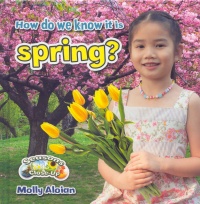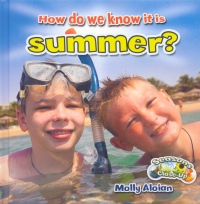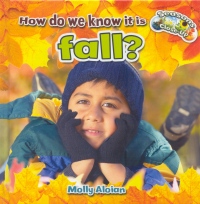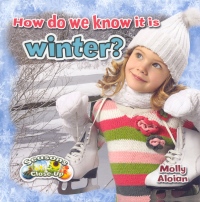| ________________
CM . . .
. Volume XIX Number 26. . . .March 8, 2013
excerpt:
An introduction to the seasons, this series draws on common knowledge and experiences of each season and slowly extends the information into scientific content. Each book has 24 pages; including a table of contents, "words to know" glossary and basic index. The information is formatted with a good balance of illustration, photograph or diagram and text so as not to overwhelm the intended younger audience. All four titles overlap in content and format; however this is to the credit of the series as a whole. The rotation of the earth around the sun is described in each book but written differently using similar vocabulary. The seasons are described in sequence for each title, with the featured season garnering more detail about what precedes and follows. The seasons are approached from a North American perspective and include both Celsius and Fahrenheit scales when discussing temperature, making the series relevant in Canada and the United States. It is also acknowledged that in some parts of the world there are two seasons – rainy and dry. The strength of the series is how the seasons are described using other subject areas, including weather, food, plants, animals, and clothing. Because of this approach, each book applies to the season it describes as well as other topics. The books can be read individually; however, by reading all four texts together, readers would, for example, also have a fairly broad understanding of plants in each season. How Do We Know It is Spring? is particularly useful for the discussion of plant growth as spring is the time when seeds are planted, begin to grow and bloom for a fall harvest which is described in How Do We Know It is Fall?. How Do We Know It is Summer? includes an experiment that involves using the hot summer sun to demonstrate why we experience hotter temperatures during this particular season. Winter weather is described in How Do We Know It is Winter?, specifically the formation of snowflakes and the implications of blizzards for people. The "Seasons Close-Up" series is well-designed for its intended audience and includes many features beyond the basics of each season. Though a great multi-purpose resource, it may be too general for older readers. Highly Recommended. Kate Hachborn is a library technician at the W. Ross Macdonald School in Brantford, ON.
To comment
on this title or this review, send mail to cm@umanitoba.ca.
Copyright © the Manitoba Library Association. Reproduction for personal
use is permitted only if this copyright notice is maintained. Any
other reproduction is prohibited without permission.
NEXT REVIEW |
TABLE OF CONTENTS FOR THIS ISSUE
- March 8, 2013.
AUTHORS |
TITLES |
MEDIA REVIEWS |
PROFILES |
BACK ISSUES |
SEARCH |
CMARCHIVE |
HOME |



